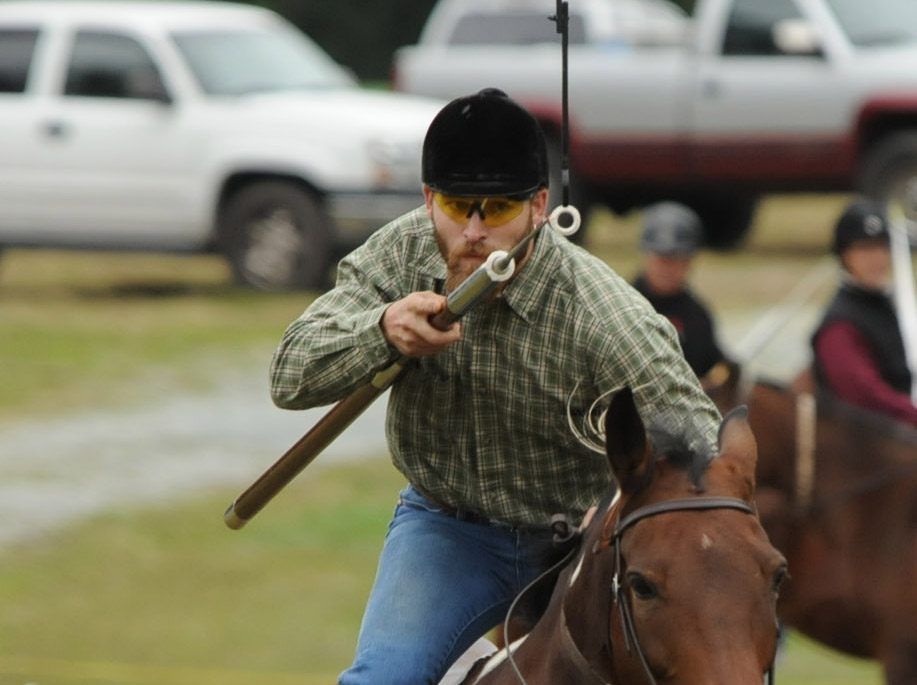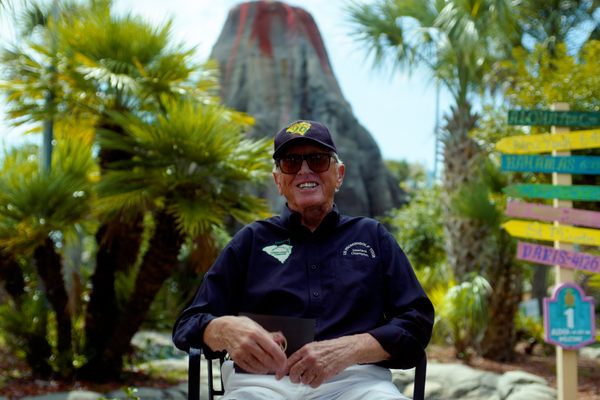Why Maryland Loves Jousting
The first official state sport in the U.S. continues a medieval tradition.

Hail good readers and attend me, for today we discuss jousting in Maryland!
Jousting tournaments have been taking place in the Mid-Atlantic state since colonial times, a medieval tradition brought over from the old country. But it wasn’t until 1962 that Maryland named jousting its official state sport, simultaneously making it the first U.S. state to make such a designation. To this day, only a handful of U.S. states have chosen to name official state sports, and fewer still have chosen something as esoteric as jousting.
The sport first made its way from England to Maryland thanks to the influence of colonial Maryland’s first governor, Cecil Calvert, and later, his son Charles. It’s a tradition that’s managed to survive through the centuries, embedding itself in the state’s cultural DNA.
Jousting really took off in Maryland around the time of the Civil War, when tournaments became popular in farming communities. “Originally it was used as a fundraiser after the war, to raise funds for the community. There’s a lot of tradition to that,” says Ronald Vogel, the president of the Maryland Tournament Jousting Association. Vogel first began jousting at age 12, then returned to the sport later in life, and has now been jousting for the past 25 years. “Then it turned into a sport where the farmers with stock horses could ride. It wasn’t just the gentry that could participate in their saddle horses. You could take a stock horse, and he could surely take you down the jousting track. A lot of our early champions were dairy farmers,” he says.
With a few exceptions, the jousting tournaments that take place today in Maryland don’t much resemble what you see on Game of Thrones. The modern sport takes its inspiration from a form of joust training, where knights would ride at speed and try to get their lance through a hanging ring. In ring jousting, as it is sometimes called, the idea is the same, although the rules are a bit more strict.
A handful of jousting clubs are active in the state, such as Vogel’s group, as well as the Eastern Shore Jousting Association. It’s a close community, and all clubs play by the same rules. “Our clubs are open. You don’t have to be a member of that club to participate. So if we don’t have a joust and Eastern Shore does, we’d surely go down and ride with them,” says Vogel.
During a ring joust, a rider holding a sharply pointed lance gets to take three runs down an 80-yard track, passing under a trio of arches along the way. A small ring hangs from each arch, and the goal is to spear as many as you can in a limited amount of time. The size of the ring and the allotted time to make it down the track are determined by the level of competition. This ranges from the professional class, where riders only have 8 to 9 seconds to collect rings with an inside diameter of just an inch, to the novice class, where the rings have a diameter of an inch and three-quarters* and riders can take as long as they need (so long as they are moving faster than a walk). No matter the class, in the case of a tie, the size of the rings is reduced until there is a winner.
At times, some jousting tournaments feature pageants, crowning ceremonies, and other medieval trappings, but the violent, armor-clad clashes depicted in movies are nowhere to be seen. Well, mostly. “Years ago there were a couple of people who would put on a medieval joust. But those fellas got a little bit older and got tired of hitting the ground hard,” says Vogel.
Picking up rings might be the goal of the sport, but as Vogel explains, the real challenge is in training and controlling your horse. “A lot of people can ride a horse, but just because you can ride a horse doesn’t mean that you can joust,” he says. “The horse has to perform flawlessly or else it doesn’t matter. Your skill level doesn’t matter, because if that horse is not flawless, you are not going to get those rings once they start to diminish in size.” Any horse has the potential to become a jousting horse with the proper training, says Vogel, which is part of the appeal of the sport since even common farming steeds can become reliable mounts.
Marylanders from a wide range of backgrounds and ages participate in the sport, with some jousters starting as young as three years-old. Those who stick with it can rise up to compete in the Maryland State Jousting Championship, an annual contest that takes place on the first Saturday in October. But even at that level, it’s not always easy. “Some days you can’t miss a ring, and some days you can’t buy a ring.”
In 2004, Maryland added lacrosse as the state’s official team sport, but jousting will always be the one that got there first. The Maryland jousting community is small, with roughly 90 to 100 active participants each year according to Vogel, but it has staying power. Vogel sees the uniqueness of the sport and its success as a family pastime as the keys to its continuing appeal. He readily acknowledges that it’s unlikely to get very large due to the practice, gear, and animals it requires. But he also hopes that the sport will survive, as a Maryland tradition. “Everyone wants this sport to maintain for future generations,” he says. “I’d like to see it still going on and be open to anyone who wants to do it.”
*Correction: An earlier version of this article misstated the size of the novice class jousting rings. They are 1 3/4 inches in diameter, not 1 3/4 inches in circumference.












Follow us on Twitter to get the latest on the world's hidden wonders.
Like us on Facebook to get the latest on the world's hidden wonders.
Follow us on Twitter Like us on Facebook